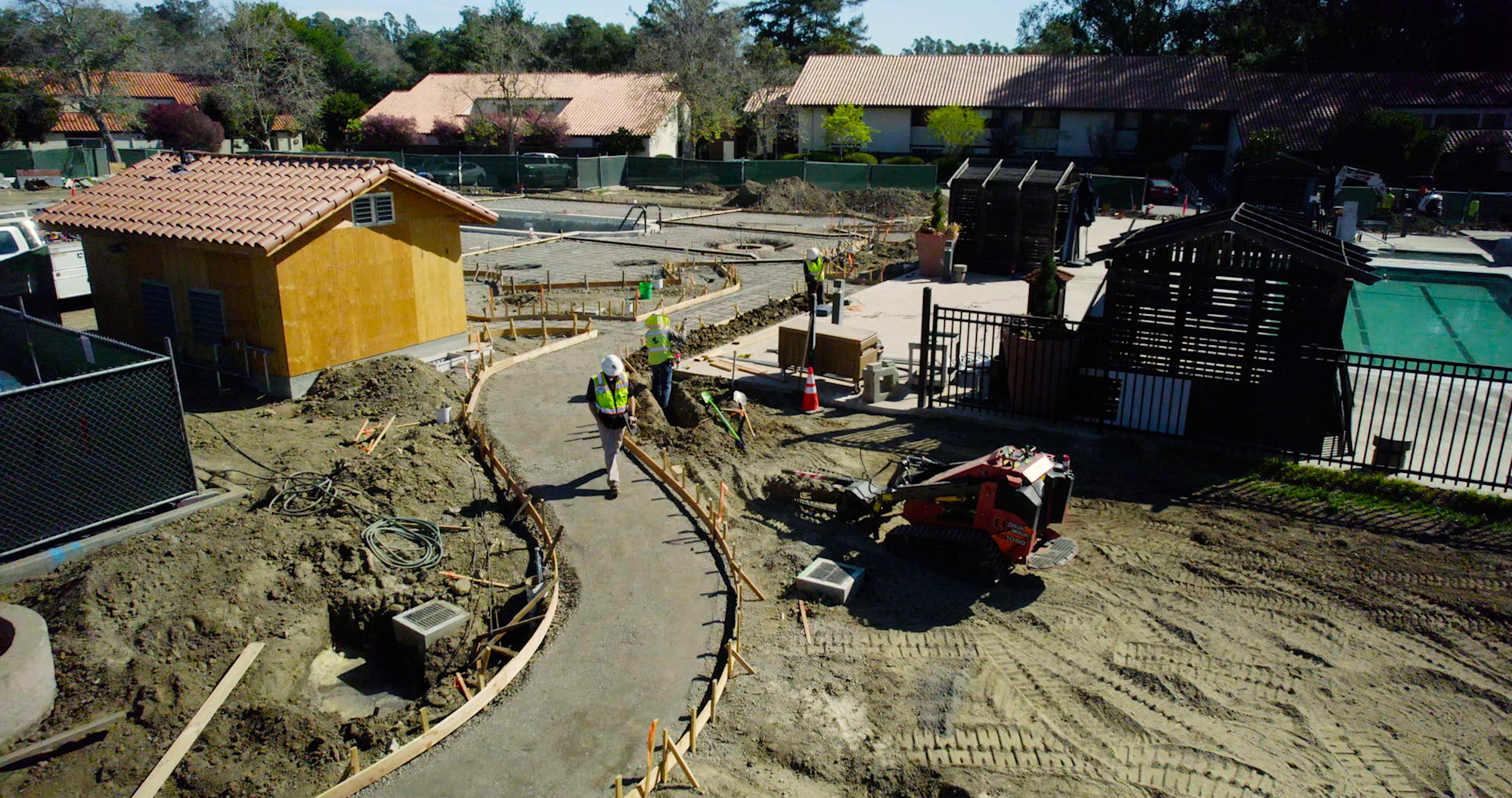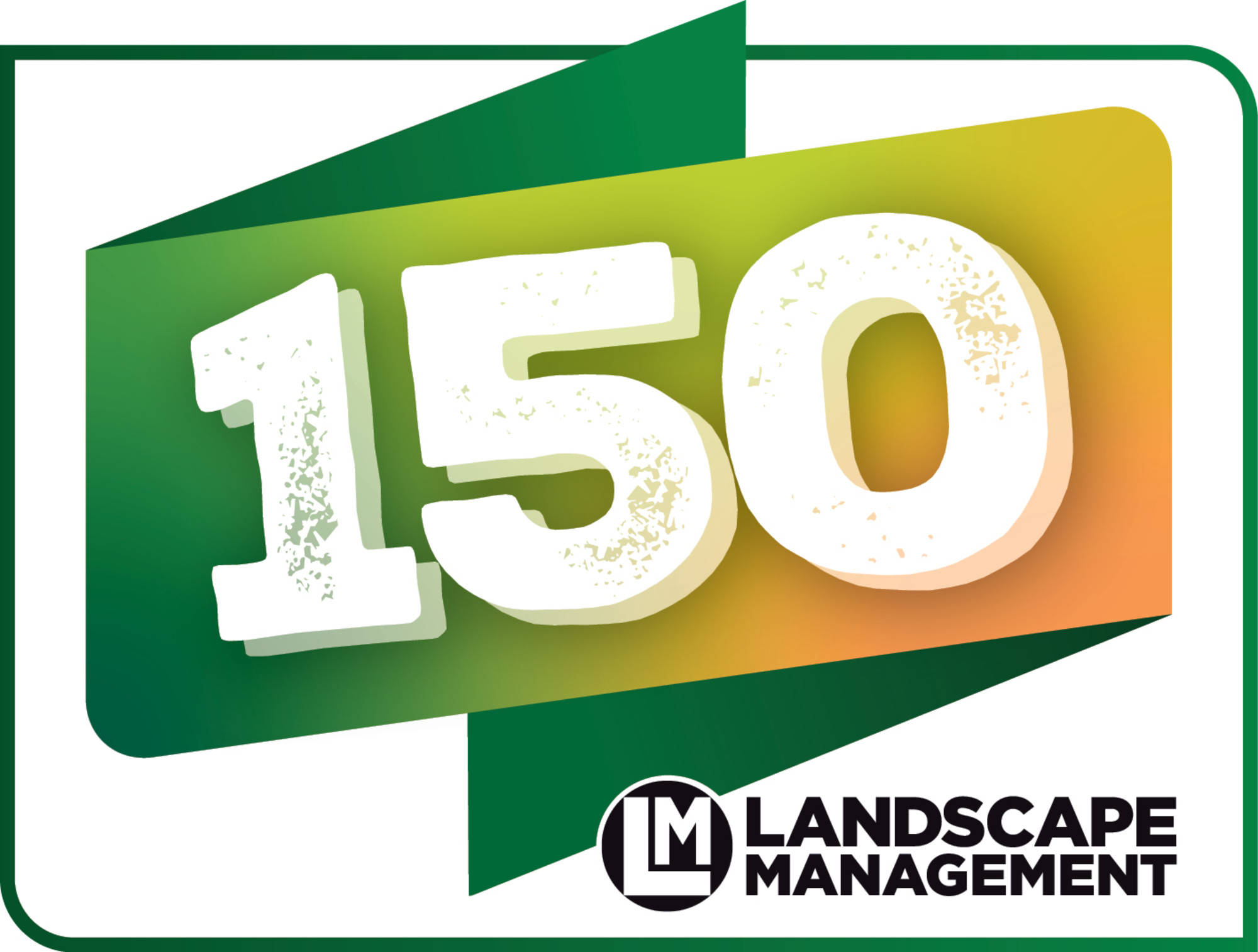Table of Contents
Table of Contents
- What are business aggregation rules?
- What are the IRS aggregation rules for related landscaping businesses?
- Common ownership
- Provide similar or related services
- Operate in coordination or reliance
- Share the same tax year
- How do aggregation rules apply to landscaping businesses?
- What types of landscaping business structures trigger aggregation?
- Separate LLCs under the same ownership
- A parent company with multiple subsidiaries
- Franchisees operating under one landscaping brand
- Partnerships with overlapping ownership or services
- What are the other benefits of aggregating multiple landscaping businesses?
- Streamlined tax planning and reduced administrative burden
- Risk management
- Clear visibility into business performance
- What are the drawbacks of aggregating multiple landscaping businesses?
- What are the consequences of violating business aggregation rules?
- How Aspire helps landscaping businesses manage aggregation and compliance
- What are the consequences of violating business aggregation rules?
- How Aspire helps landscaping businesses manage aggregation and compliance
- Separate LLCs under the same ownership
- A parent company with multiple subsidiaries
- Franchisees operating under one landscaping brand
- Partnerships with overlapping ownership or services
- What are the other benefits of aggregating multiple landscaping businesses?
- Streamlined tax planning and reduced administrative burden
- Risk management
- Clear visibility into business performance
- What are the drawbacks of aggregating multiple landscaping businesses?
- What are the consequences of violating business aggregation rules?
- How Aspire helps landscaping businesses manage aggregation and compliance
- Separate LLCs under the same ownership
- A parent company with multiple subsidiaries
- Franchisees operating under one landscaping brand
- Partnerships with overlapping ownership or services
- What are the other benefits of aggregating multiple landscaping businesses?
- Streamlined tax planning and reduced administrative burden
- Risk management
- Clear visibility into business performance
- What are the drawbacks of aggregating multiple landscaping businesses?
- What are the consequences of violating business aggregation rules?
- How Aspire helps landscaping businesses manage aggregation and compliance
- Separate LLCs under the same ownership
- A parent company with multiple subsidiaries
- Franchisees operating under one landscaping brand
- Partnerships with overlapping ownership or services
- What are the other benefits of aggregating multiple landscaping businesses?
- Streamlined tax planning and reduced administrative burden
- Risk management
- Clear visibility into business performance
- What are the drawbacks of aggregating multiple landscaping businesses?
- What are the consequences of violating business aggregation rules?
- How Aspire helps landscaping businesses manage aggregation and compliance
- How do aggregation rules apply to landscaping businesses?
- What types of landscaping business structures trigger aggregation?
- Separate LLCs under the same ownership
- A parent company with multiple subsidiaries
- Franchisees operating under one landscaping brand
- Partnerships with overlapping ownership or services
- What are the other benefits of aggregating multiple landscaping businesses?
- Streamlined tax planning and reduced administrative burden
- Risk management
- Clear visibility into business performance
- What are the drawbacks of aggregating multiple landscaping businesses?
- What are the consequences of violating business aggregation rules?
- How Aspire helps landscaping businesses manage aggregation and compliance
- What is Slack, and why should landscaping businesses use it?
- Practical ways landscaping teams can use Slack
- Organize conversations by project or crew
- Share job details and files instantly
- Coordinate schedules and daily tasks
- Downsides of using Slack for your landscaping business
- What to use instead?
- Technical janitorial supervisor interview questions
- 1. How do you evaluate the cleanliness of a facility?
- 2. What cleaning products and equipment do you typically use?
- 3. How do you ensure compliance with OSHA regulations?
- 4. How do you avoid cross-contamination?
- 5. How do you clean high-touch surfaces?
- General interview questions for janitorial supervisors
- 1. What inspired you to become a janitorial supervisor?
- 2. What do you enjoy most about working in janitorial services?
- 3. What is the most challenging aspect of janitorial work?
- Team leadership interview questions for janitorial supervisors
- 1. How do you delegate tasks in a janitorial team?
- 2. How do you handle conflicts among team members?
- 3. How would you handle an underperforming team member?
- 4. How would you handle scheduling conflicts?
- 5. How would you provide feedback to your janitorial team?
- 6. How would you evaluate the performance of custodial staff?
- 7. How would you integrate new members into your team?
- Situational and behavioral interview questions for janitorial supervisors
- 1. How have you handled customer complaints about cleanliness?
- 2. Has a team member ever been injured during a job you managed, and if so, what did you do?
- 3. Describe a situation where a team member wasn’t adhering to the cleaning schedule. How did you handle it?
- Technology questions for janitorial supervisors
- 1. Do you have experience with janitorial software?
- 2. How do you remain current with new janitorial and cleaning technology?
- What should you do before a custodial supervisor interview?
- What should you do after a custodial supervisor interview?
- How long should a janitorial supervisor interview be?
- Grow your cleaning business with Aspire
- 1. Streamline scheduling and job management
- 2. Set up a clear workflow for estimates and invoices
- 3. Organize tools, equipment, and supplies
- 4. Organize digital files and documentation
- 5. Improve team communication and accountability
- 6. Systematize client communication
- 7. Create a repeatable onboarding process
- Over to you!
You offer multiple landscaping services and operate in various locations, but you’re unsure whether tax aggregation is the right move for the business.
Maybe you’re confused about compliance and don’t want to risk IRS penalties.
Whether you operate separate services or run across different locations, understanding when the IRS treats your business as one entity is crucial, as it can save you thousands in taxes or cost you money.
This guide covers everything you need to know about aggregation for landscaping businesses.
You’ll learn about the:
IRS rules for tax aggregation.
Types of landscaping business structures that trigger aggregation, and more.
But first, what exactly is this business aggregation rule about?
What are business aggregation rules?
Business aggregation rules are policies passed by the IRS. They determine when your separate landscaping businesses can be treated as a single entity for tax purposes.
Say you operate lawn care, hardscaping, and maintenance services differently.
Aggregation rules allow you to merge the different service offerings. You get to combine gross receipts, wages, and business properties to possibly increase tax deductions.
Many landscaping companies set up different entities for liability protection to shield themselves from losses if one business goes bankrupt, gets sued, or experiences some kind of loss.
However, this setup can create some complications for your business:
Tax payments for the different entities.
Possible compliance issues resulted from filing separate tax returns.
Miscalculating payments because you’re not seeing the full financial report across each business, leading to potential penalties.
Following the aggregation rules will help:
Simplify bookkeeping
Maximize tax reductions
Prevent abuse of tax breaks, ensuring you’re not violating laws that could lead to severe penalties.
Keep reading to learn more about these rules.
What are the IRS aggregation rules for related landscaping businesses?
Want to aggregate your multiple landscaping entities?
Here are the IRS rules you must satisfy.

Common ownership
The first rule of aggregation is that you or a group of persons must directly or indirectly own at least 50% of each business you want to merge.
For businesses owned between spouses, the IRS allows attribution between both parties but not between parents and children.
What this means: If you own 50% of your hardscaping company and 60% of a lawn maintenance service, you’ve satisfied this rule. Secondly, the 50% ownership must have existed for a significant part of the tax year.
Provide similar or related services
Businesses must offer complementary services or operate in the same field to be aggregated.
That means you can’t merge a snow removal service with an accounting firm, even if you have over 50% ownership.
Here are some examples of combinations that qualify:
Lawn care and tree trimming services.
Irrigation installation and maintenance, and snow removal services.
Commercial landscaping and landscape design.
Operate in coordination or reliance
Your landscaping businesses must share significant resources to be aggregated, showing clear signs of interdependence and reliance.
That, for instance, could mean your:
Landscaping crew gets materials from your garden center.
Employees work for the lawn service and hardscaping company.
Equipment such as mowers, trucks, or blowers is used across different service lines.
Facilities like equipment storage are shared by multiple businesses.
These examples illustrate how businesses must naturally complement each other and serve in the same industry.
Share the same tax year
All the landscaping businesses to be aggregated must use the same tax year. This is helpful because it:
Simplifies calculations and reduces audit risks.
Ensures accurate comparisons, preventing distortions in your financial reports.
Makes it easy to track operations of all entities and ensure unified financial statements.
How do aggregation rules apply to landscaping businesses?
If you run multiple landscaping businesses (under multiple LLCs, DBAs, or S corporations), aggregation rules let you treat them as one for tax purposes.
These rules come into play in areas such as
Tax compliance: When multiple businesses are considered as a single entity, income and deductions might need to be consolidated, and certain tax credits (e.g., employee retention credit) could be affected.
Employee benefits: You may be required to provide similar benefits across the consolidated companies. Eligibility, contributions, and nondiscrimination testing would also apply to all.
Ownership and control: The ownership structure of the companies impacts whether or not aggregation applies. If you own over 50% of multiple businesses, they can be considered controlled groups.
The point is that you can’t avoid rules by splitting the landscaping business into several entities. However, the most impactful benefit comes from aggregating companies to claim more qualified business income (QBI) deduction under Section 199A of the tax code than if the wages and capital limitations were applied separately.
This is especially helpful when one of your landscaping businesses has high wages but low QBI, while another has low wages but high QBI.
To take advantage of aggregation for QBI deduction, your landscaping businesses should meet these requirements:
Common ownership: You or the group must own more than 50% of the businesses for most of the tax year.
Same tax year: All the entities must use the same tax year-end, e.g., November 30th.
Non-specified service business: Landscaping qualifies as one.
Meet two of these criteria: provide similar services, share resources, or depend on each other, by sharing clients or supply chains, for example.
NB: Section 199A aggregation is an election you choose to make. Once it’s decided, it’s binding and applies to all owners of the aggregated businesses.
Here’s a practical example to help you understand aggregation for landscapers:
Say you own several related businesses:
Cespire Landscaping LLC
Quick Irrigation LLC
Lawn Care Supply Store LLC
You can aggregate them and calculate the QBI deduction as one combined business instead of calculating each company's 20% deduction separately. This helps you save more in taxes.
See what that means by using the section 199A deduction formula below:
First, the 20% deduction is typically limited by the smaller of either 20% of business profit or 50% of W-2 wages paid.
Now, if you calculate each landscaping business without aggregation, you get
Cespire Landscaping:
20% of $100,000 profit = $20,000 or 50% of $80,000 wages = $40,000
Tax deduction = $20,000 (smaller number)
Quick Irrigation:
20% of $50,000 profit = $10,000 or 50% of $10,000 wages = $5,000
Tax deduction = $5,000 (smaller number)
Lawn Care Supply Store:
20% of $30,000 profit = $6,000 or 50% of $5,000 wages = $2,500
Tax deduction = $2,500 (smaller number)
Total deduction without aggregation: $20,000 + $5,000 + $2,500 = $27,500
However, here’s what you get with aggregation:
20% of $180,000 profit = $36,000
50% of $95,000 wages = $47,500
Tax deduction = $36,000 (smaller number)
This aggregated deduction of $36,000 grants you an extra $8,500 in deductions, compared to the non-aggregated figure of $27,500.
What types of landscaping business structures trigger aggregation?
First, aggregation isn’t triggered by one business structure but by the relationship between multiple structures. So, if the right conditions are met, here are structures that can be subject to aggregation.

Separate LLCs under the same ownership
This refers to different LLC companies you or the same group of individuals own. It’s common for businesses that operate in different cities or states.
Using the previous business examples, it means you (or the same group) own more than 50% of:
Cespire Landscaping LLC
Quick Irrigation LLC
Lawn Care Supply Store LLC
Each of them:
Has its Tax ID number
File its tax return
Has separate bank accounts, contracts, and liability protection
But while they’re legally separate entities, the common ownership is grounds for potential aggregation, allowing you to save thousands in taxes while maintaining legal separation.
A parent company with multiple subsidiaries
This covers businesses with significant ownership in other companies. For instance, instead of you owning:
Cespire Landscaping LLC
Quick Irrigation LLC
Lawn Care Supply Store LLC
You own Cespire Landscaping LLC, which in turn owns the other companies.
If your business is structured this way, it can still be aggregated as long as there’s common ownership through the parent company.
Franchisees operating under one landscaping brand
Franchisees are typically independently owned businesses operating in a single location. They are not, however, eligible for QBI deduction unless they meet the common ownership requirement.
This is because the businesses are independently owned, and franchisees don’t usually own each other’s companies despite sharing the same brand and offering similar services.
But there are exceptions for:
Multi-unit franchisees, where one person or group owns multiple franchise locations.
Franchisors that directly own multiple landscaping locations.
Essentially, ownership structure is what it all comes down to when aggregating franchises.
Partnerships with overlapping ownership or services
If your landscaping businesses:
Offer similar services
Share facilities or centralized business functions like HR or accounting
Operate in coordination, such as sharing equipment or client lists
They could meet the operational requirement needed for aggregation.
Also, aggregation is possible if you own the majority stakes in multiple landscaping partnerships, as you’d satisfy the common ownership rule.
What are the other benefits of aggregating multiple landscaping businesses?
Aggregating your lawn care services primarily enables you to maximize the QBI deduction. But there are other advantages:
Streamlined tax planning and reduced administrative burden
Business aggregation lets you combine tax calculations instead of having multiple separate ones.
This ensures simple record-keeping and makes it easier to track wages across all businesses.
Plus, you can consolidate tax filings and reduce the duplicate administrative duties you’d typically do otherwise.
Risk management
Aggregating also reduces dependence on a single source of income.
A business's loss is offset by income from another company within the group.
Considering landscaping is a seasonal business, services can equally offset each other.
For instance, snow removal during winter and landscaping in summer.
Clear visibility into business performance
Consolidated business operations give you insight into the entire company’s performance as a single unit.
Instead of separately monitoring financial activities, you can easily view cash flow between operations, cross-train employees, or bulk purchase landscaping materials.
What are the drawbacks of aggregating multiple landscaping businesses?
While aggregation can be great, there are some disadvantages to consider before choosing it. They include:
Loss of tax flexibility: Once you’ve decided to aggregate, it becomes difficult to undo. You can’t optimize each business separately anymore. Plus, if there’s a poorly performing entity, it can drag down the whole group. Aggregation could push all the companies into high tax brackets with the combined income.
Added administrative burdens: Sure, you wouldn’t have to file taxes separately anymore. However, you need to keep more detailed records to avoid mistakes and for IRS compliance. You also have to consistently track aggregation compliance and meet aggregation requirements annually.
Netting negative and positive QBI: When multiple businesses are aggregated, financial losses in one offset income in others. However, wages and qualified property basis from businesses at a loss are typically excluded from calculations, which can reduce the overall QBI deduction.
What are the consequences of violating business aggregation rules?
If you elect to aggregate your landscaping businesses, it’s crucial to follow the IRS aggregation rules and disclose the aggregated group. Failure to do so may result in:
Loss of tax benefits: If you fail to provide necessary documentation, such as the annual statements, the IRS can disaggregate the businesses and treat them as individual entities for tax purposes. This could lead to a reduced QBI deduction or elimination of the entire deduction.
Financial penalties: Failing to provide correct information returns or payee statements could trigger penalties. Depending on time and correction efforts, these could range from $60 to $310 per return.
Audit risks: Aggregation errors can lead to time-consuming audits from the IRS. You may also need to refile returns to correct disclosures, which might mean additional costs.
To avoid violations, your best bet is to work with qualified tax professionals for proper aggregation elections and maintain proper documentation to support aggregation positions.
How Aspire helps landscaping businesses manage aggregation and compliance
Aspire won’t help you ensure compliance with IRS criteria, but it offers the next best thing: operational visibility into all your landscaping businesses.
As a landscaping management tool, Aspire provides insights into your entire financial operations, from estimations to job costs, profit and loss margins, and more. It’s integrated with accounting software like QuickBooks to ensure smooth tax preparation.
This guarantees detailed reports across all entities, ensuring clean, auditable financial documentation that’s IRS compliant.
Get a glimpse into how Aspire helps you organize your landscaping business's financials and prepare reports.








